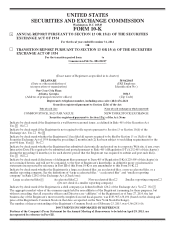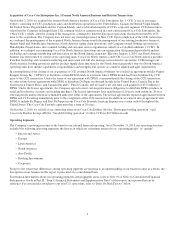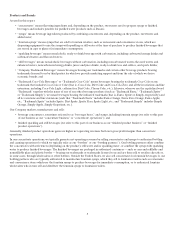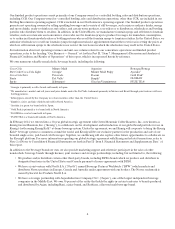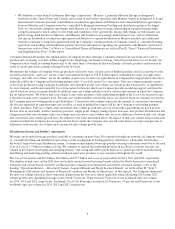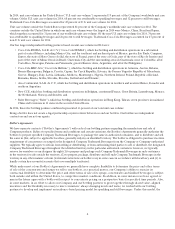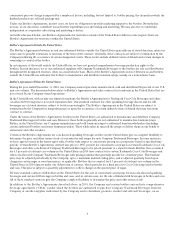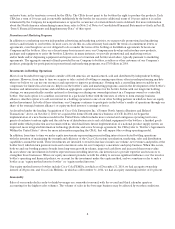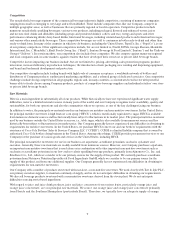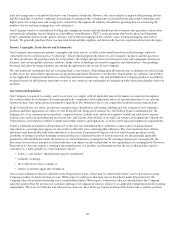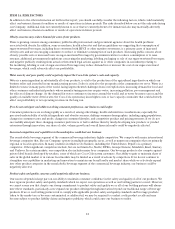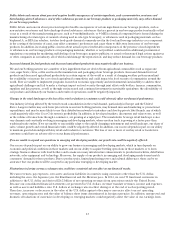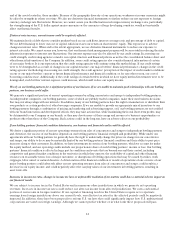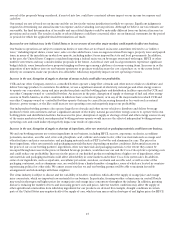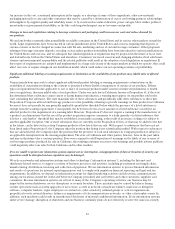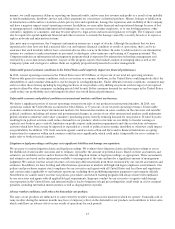Coca Cola 2014 Annual Report Download - page 10
Download and view the complete annual report
Please find page 10 of the 2014 Coca Cola annual report below. You can navigate through the pages in the report by either clicking on the pages listed below, or by using the keyword search tool below to find specific information within the annual report.8
exclusive basis, in the territories covered by the CBAs. The CBAs do not grant to the bottlers the right to produce the products. Each
CBA has a term of 10 years and is renewable indefinitely by the bottler for successive additional terms of 10 years unless it is earlier
terminated by the Company for nonperformance or upon the occurrence of certain defined events of default. For more information
about the North America refranchising transactions, refer to Note 2 of Notes to Consolidated Financial Statements set forth in Part II,
“Item 8. Financial Statements and Supplementary Data” of this report.
Promotions and Marketing Programs
In addition to conducting our own independent advertising and marketing activities, we may provide promotional and marketing
services and/or funds to our bottlers. In most cases, we do this on a discretionary basis under the terms of commitment letters or
agreements, even though we are not obligated to do so under the terms of the bottling or distribution agreements between our
Company and the bottlers. Also, on a discretionary basis in most cases, our Company may develop and introduce new products,
packages and equipment to assist the bottlers. Likewise, in many instances, we provide promotional and marketing services
and/or funds and/or dispensing equipment and repair services to fountain and bottle/can retailers, typically pursuant to marketing
agreements. The aggregate amount of funds provided by our Company to bottlers, resellers or other customers of our Company’s
products, principally for participation in promotional and marketing programs, was $7.0 billion in 2014.
Investments in Bottling Operations
Most of our branded beverage products outside of North America are manufactured, sold and distributed by independent bottling
partners. However, from time to time we acquire or take control of bottling or canning operations, often in underperforming markets
where we believe we can use our resources and expertise to improve performance. Owning such a controlling interest enables us to
compensate for limited local resources; help focus the bottler’s sales and marketing programs; assist in the development of the bottler’s
business and information systems; and establish an appropriate capital structure for the bottler. In line with our long-term bottling
strategy, we may periodically consider options for divesting or reducing our ownership interest in a Company-owned or -controlled
bottler. One such option is to combine our interest in a particular bottler with the interests of others to form strategic business
alliances. Another option is to sell our interest in a bottling operation to one of our other bottling partners in which we have an equity
method investment. In both of these situations, our Company continues to participate in the bottler’s results of operations through our
share of the strategic business alliance’s or equity method investee’s earnings or losses.
As described under the heading “Acquisition of Coca-Cola Enterprises Inc.’s Former North America Business and Related
Transactions” above, on October 2, 2010, we acquired the former North America business of CCE. In 2014, we began the
implementation of a new business model in the United States which includes more rational and contiguous operating territories;
grants of exclusive territory rights and the sale by us of distribution assets and cold-drink equipment to the bottlers; a finished goods
model under which production assets remain with us, which facilitates future implementation of a national product supply system; an
improved, more integrated information technology platform; and a new beverage agreement, the CBA (refer to “Bottler’s Agreements
Within the United States” above for more information regarding the CBA), that will support the evolving operating model.
In addition, from time to time we make equity investments representing noncontrolling interests in selected bottling operations
with the intention of maximizing the strength and efficiency of the Coca-Cola system’s production, marketing, sales and distribution
capabilities around the world. These investments are intended to result in increases in unit case volume, net revenues and profits at the
bottler level, which in turn generate increased concentrate sales for our Company’s concentrate and syrup business. When this occurs,
both we and our bottling partners benefit from long-term growth in volume, improved cash flows and increased shareowner value.
In cases where our investments in bottlers represent noncontrolling interests, our intention is to provide expertise and resources to
strengthen those businesses. When our equity investment provides us with the ability to exercise significant influence over the investee
bottler’s operating and financial policies, we account for the investment under the equity method, and we sometimes refer to such a
bottler as an “equity method investee bottler” or “equity method investee.”
Our equity method investee bottlers include Coca-Cola FEMSA, in which as of December 31, 2014, we had an equity ownership
interest of 28 percent, and Coca-Cola Hellenic, in which as of December 31, 2014, we had an equity ownership interest of 23 percent.
Seasonality
Sales of our nonalcoholic ready-to-drink beverages are somewhat seasonal, with the second and third calendar quarters
accounting for the highest sales volumes. The volume of sales in the beverage business may be affected by weather conditions.

